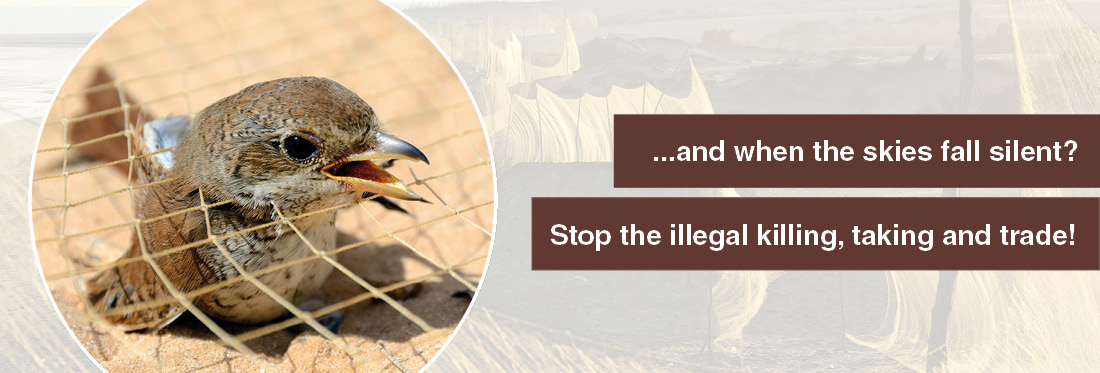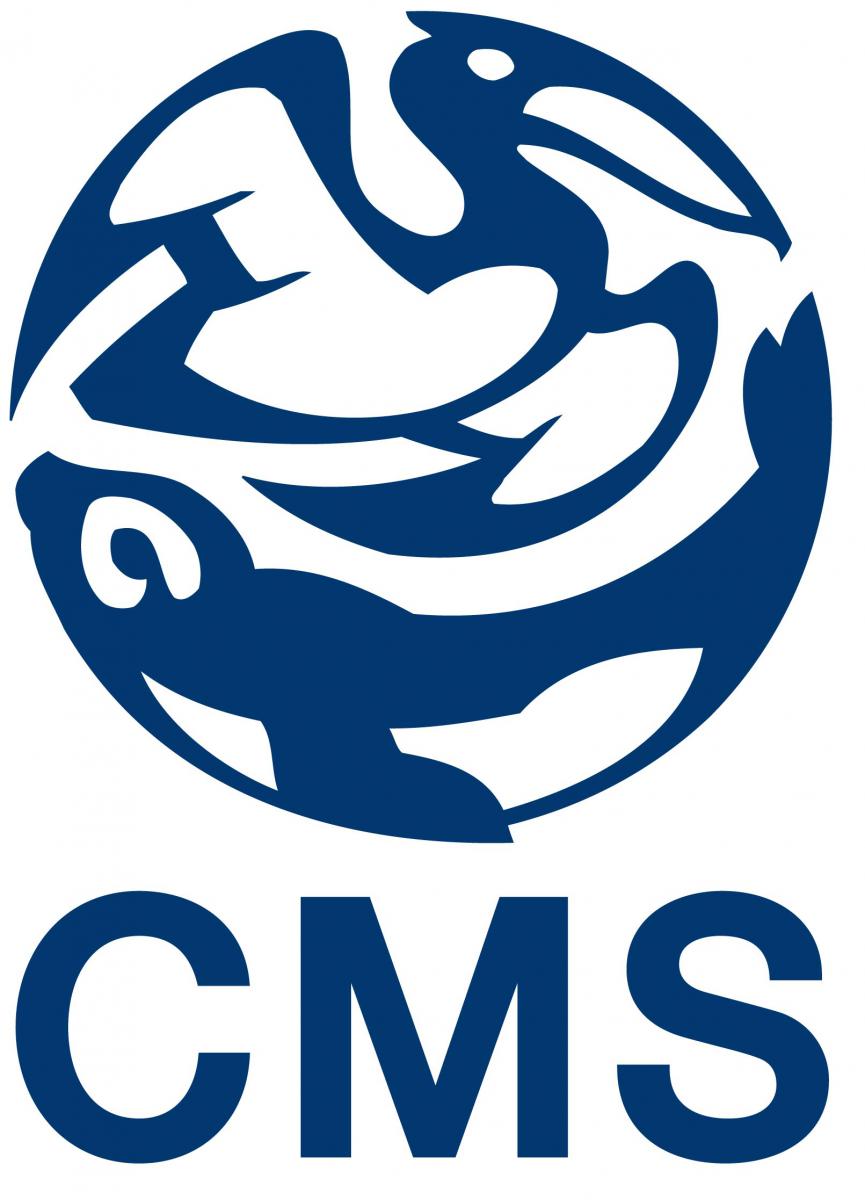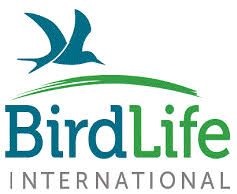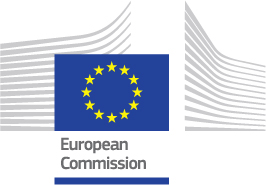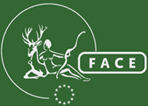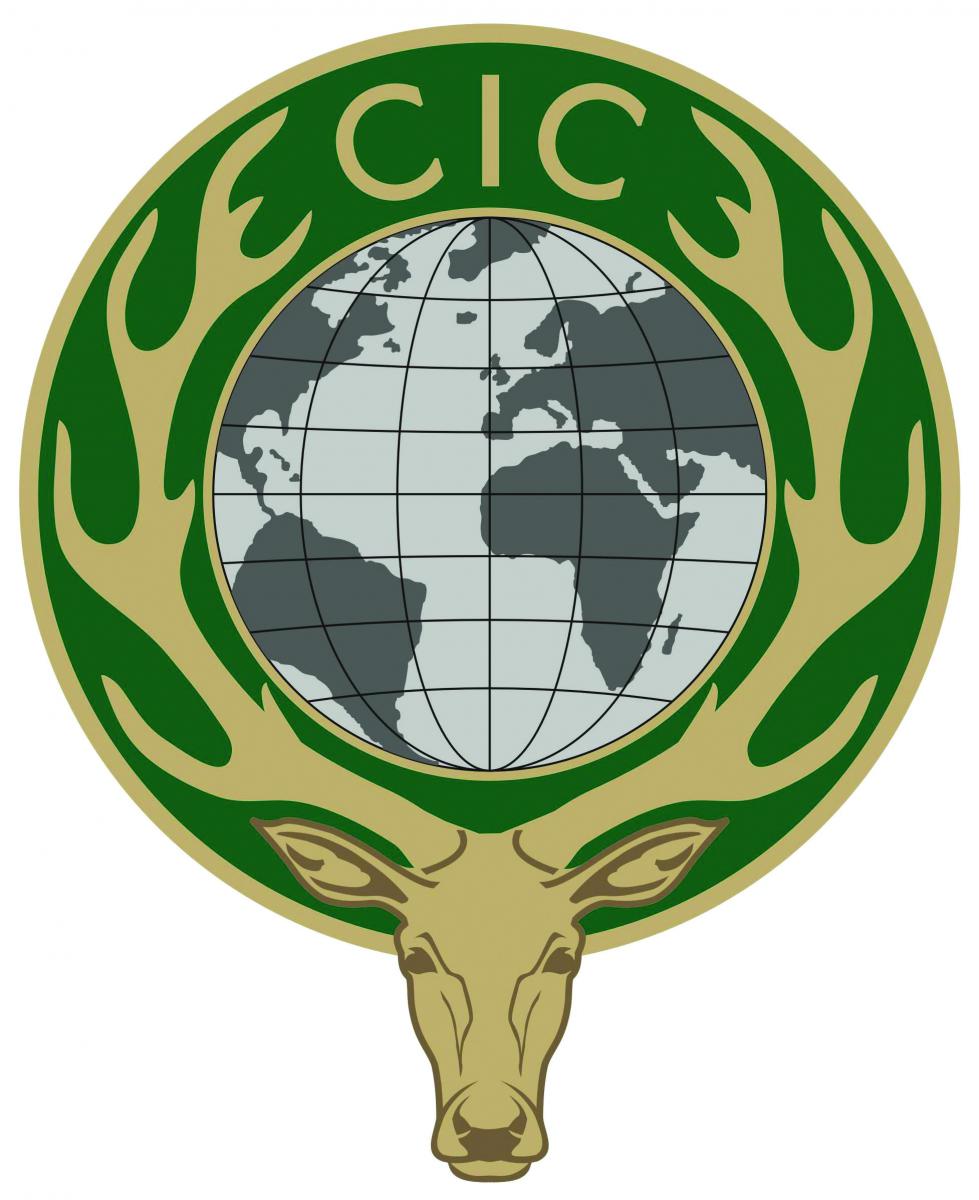You are here
Stop the Illegal Killing, Taking and Trade of Migratory Birds
Briefly
With the theme “Stop the illegal killing, taking and trade of Migratory Birds!”, WMBD 2016 highlighted the existensial threat of the illegal killing, taking and trade of migratory birds and the need for a concerted action between governments, International organizations, NGOs and the civil society in order to end this phenomenon that each year kills millions of birds.
In the eleventh edition of WMBD, 319 events were registered from 85 countries around the world.
The Official WMBD 2016 Poster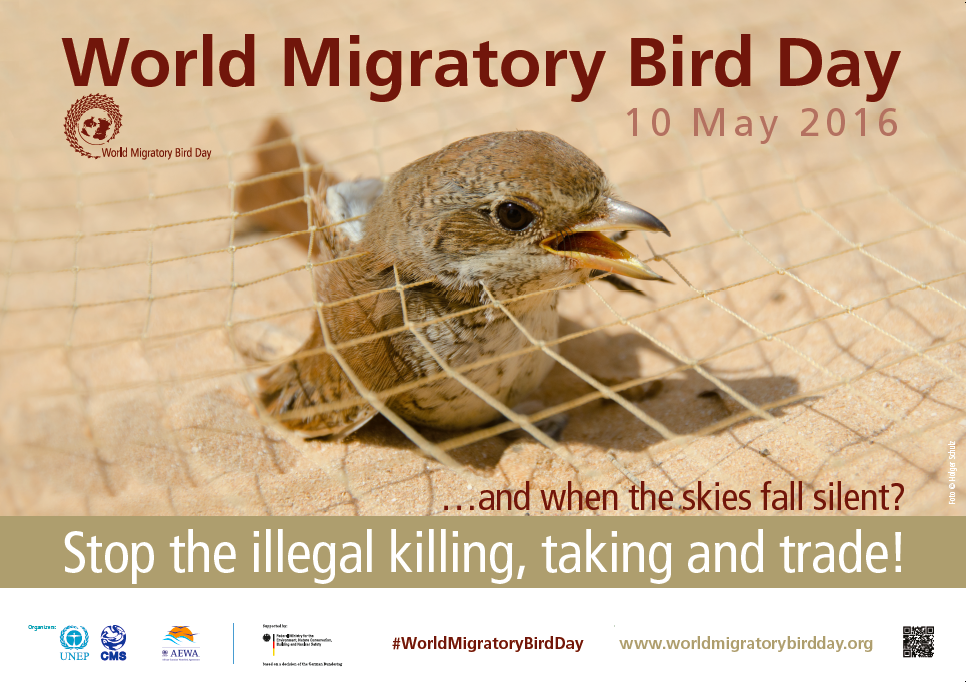
The official WMBD 2016 video trailer
The 2016 World Migratory Bird Day Theme
.... and when the skies fall silent? Stop the illegal killing, taking and trade!
So that future generations also benefit from natural resources, governments have passed laws – both domestic and international – to ensure sustainability, protecting wild animals including migratory birds by restricting or prohibiting their exploitation. The protection of migratory birds has been coordinated at the international level since the beginning of the twentieth century. Migratory birds were once synonymous with abundance, and seen as a gift coming from the sky. Historically, people have hunted wildlife for a variety of reasons – food and sport - and in the past, such activities were conducted at a scale that was sustainable. In many cases, however, this is no longer true.
Nets along the north coast of Africa kill millions of birds every year - and it is only one example amongst many. The methods used and the numbers taken have changed beyond measure, and the survival of the targeted species which have to face many other pressures such as loss or deterioration of habitats is in doubt. In many countries, robust legislation exists and mechanisms are in place to enforce it; in others, the rules are not followed and the authorities lack the resources or the will to implement them properly on the ground. If once common migratory birds are to be prevented from disappearing, such as the Linnet that has lost 50% of its population since 1980, or the farmland birds with a loss of 300 million individuals in Europe over the same period, the public has to be made aware of the urgency of the threat posed by illegal hunting, taking and trade. Attitudes must change and we can no longer afford to turn a blind eye to those who flout the law and endanger our shared natural heritage.
There is a wide range of reasons for the illegal killing, taking and trade of birds – subsistence uses, recreational activities, organized crime, traditional practice and so on. They vary from one country to another, from one region of the world to another, according to what has been defined as legal or illegal – if at all. Indeed in some countries there is clearly no regulation, while in others regulations do exist but enforcement needs to be improved. Illegal activities not only affect birds’ populations, but they also harm society in general, our very existence and our natural resources. Conservation, agriculture and the tourism sector all suffer from their negative impacts. Legal hunting is affected by these illegal activities as well: despite the role that hunters play in ensuring the sustainability of livelihoods and habitats, they see their reputation jeopardized by illegal killing. While at the same time, elsewhere in the world, these illegal activities are widely socially accepted and therefore persist. Both at the national and the local level, law enforcement is the key driver to help protecting migratory birds, not only in one place but along their entire flyway.
Cooperation and awareness-raising have to be strengthened in order to fight illegal killing. The Intergovernmental Task Force set up by the CMS Secretariat is a first concrete answer to the issue in the Mediterranean region. Further actions are needed – and this shared issue should involve and bring together international organizations, governments and civil society. Indeed decisions taken by the international community or by governments will not meet any success if they are not respected or implemented on the ground. That is where civil society has a role to play, at the local level. Let us work together to protect migratory birds from illegal killing, taking and trade!
Join the celebration of a great natural wonder! Take action and celebrate, conserve and raise awareness of migratory birds on WMBD. Please register your event and download the WMBD 2016 poster and logo for your own materials and designs to support your local events.
Download the WMBD2016 Flyers in English, French and Spanish.
Check out the official statements that marked the eleventh World Migratory Bird Day (2016)
Checkout Press and Media Coverage and Material for WMBD 2016
Archived Download Materials for WMBD 2016 are still available
Find information about the WMBD 2016 Bonn Concert
Winners of the 2016 video trailer contest
More information on migratory birds and illegal killing, taking and trade:
Related CMS Resolutions, Publications & Articles
10.26. Minimizing the Risk of Poisoning to Migratory Birds [PDF]
Recognizing that, under Article II of the Convention, Party Range States agree to take action for the conservation of migratory species whenever possible and appropriate, paying special attention to migratory species, the conservation status of which is unfavourable, and taking individually or in cooperation appropriate and necessary steps to conserve such species and their habitats.
11.15 Preventing Poisoning of Migratory Birds [PDF]
Recognizing that Article III (4)(b) of the Convention requires Parties that are Range States of migratory species listed in Appendix I to endeavour “to prevent, remove,compensate for or minimize, as appropriate, the adverse effects of activities or obstacles that seriously impede or prevent the migration of the species”.
11.16 The Prevention of Illegal Killing, Taking and Trade of Migratory Birds [PDF]
Recalling Article III (5) of the Convention which provides for Parties that are Range States to prohibit the taking of species included in Appendix I, and Article V(5) (k) on Guidelines for AGREEMENTS which suggests, where appropriate and feasible, each Agreement should prepare for procedures for co-ordinating action to suppress illegal taking;
Guidelines to Prevent the Risk of Poisoning to Migratory Birds [PDF]
Following Resolution 10.26 on Minimizing the Risk of Poisoning to Migratory Birds, several documents have been prepared including: a “Review of the ecological effects of poisoning on migratory birds”; “Guidelines to Prevent Poisoning of Migratory Birds”; and a draft Resolution on “Preventing Poisoning of Migratory Birds”. To undertake this task, a Working Group was established under the Scientific Council and a Coordinator of the Working Group was appointed in January 2013, thanks to the financial support of the United Kingdom and the Coordinating Unit of the UNEP/CMS Memorandum of Understanding on the Conservation of Migratory Birds of Prey in Africa and Eurasia (Raptors MOU).
Review of the Ecological Effects of Poisoning on Migratory Birds [PDF]
The present Report has been elaborated by the CMS Preventing Poisoning Working Group to serve as background information to the draft Resolution on “Preventing Poisoning of Migratory Birds” and the “Guidelines to Prevent Poisoning of Migratory Birds” submitted to COP11 in document UNEP/CMS/COP11/Doc.23.1.2.
The phenomenon of bird migration has been a source of wonder for man since time immemorial. However, the biological integrity of this intricate seasonal journey, which covers a network of several biomes across different frontiers and continents, is being compromised due to a plethora of threats and challenges, and consequently the vulnerability of migrat ory birds is increasing worldwide.
Countries Meet to Tackle Poisoning of Birds in Southern Africa
Representatives of countries and wildlife experts met in Cape Town, South Africa on 24 August, to address poisoning of migratory birds, a problem that also threatens important predators. The Convention on the Conservation of Migratory Species of Wild Animals (CMS), the Agreement on the Conservation of African-Eurasian Migratory Waterbirds (AEWA) and the CMS Memorandum of Understanding on Birds of Prey (CMS Raptors MOU), all three instruments administered by the United Nations Environment Programme, have convened the international meeting. (Read more)
Opinion: Tackling Africa's Impending Vulture Crisis
Lightning never strikes the same place twice, or history always repeats itself? Unfortunately in the case of vultures, nature's "clean-up" crew, the latter applies -- with African populations of these useful birds facing catastrophic declines -- just as their South Asian counterparts did in the 1990s. Patricia Zurita and Bradnee Chambers explain the importance of protecting vultures, whose vital ecological role has a direct bearing on human health. (Read more)
Countries Meet to Tackle Threats to Europe’s Most Endangered Bird of Prey
Government officials, NGOs and experts from over 30 countries met from 5 to 8 July in Sofia, Bulgaria, to develop a Flyway Action Plan for the Egyptian Vulture. For the first time more than 70 representatives from Africa, Asia and Europe came together to save one of the most endangered species of birds of prey on earth. The meeting was jointly organized by the Bulgarian Society for the Protection of Birds (BirdLife Bulgaria) in the frame of the LIFE+ project “The Return of the Neophron”, and the Memorandum of Understanding on the Conservation of Migratory Birds of Prey in Africa and Eurasia (Raptors MOU), which was concluded under UNEP Convention on Migratory Species (CMS). (Read more)
Declaration by Participants of the Egyptian Vulture Flyway Action Planning Workshop [PDF]
We, seventy representatives of Governments, local authorities, nature conservation organizations and universities from 33 countries gathered in Sofia, Bulgaria in the framework of the Egyptian Vulture Flyway Action Plan workshop, jointly hosted by the Bulgarian Society for the Protection of Birds (BirdLife Bulgaria) and the Coordinating Unit of the Memorandum of Understanding on the Conservation of Migratory Birds of Prey in Africa and Eurasia (Raptors MOU);
Recognizing that the Egyptian Vulture (Neophron percnopterus) is one of our region’s most threatened bird species (classified by the IUCN Red List as ‘Endangered’) due to rapid and continuing population declines for over 20 years.
CITES and Wild Bird Trade
Wildlife trade is big business and generates substantial revenue worldwide. Alongside the illegal trade in arms and drugs, the smuggling of animals, plants and their parts, is one of the biggest challenges in terms of combating international crime. Some flagship species for conservation, such as the tiger and African elephant, have been notably affected by this illegal activity. Nearly 4,000 bird species involving several million individuals annually are subject to domestic or international trade with finches, weavers, parrots and raptors being some of the most heavily affected groups. (Read more)
BirdLife International
Assessing the scope and scale of illegal killing and taking of birds in the Mediterranean
In 2015, BirdLife published an assessment of the numbers of individual birds that may be killed/taken illegally per year in the Mediterranean region, identifying the species of greatest concern, and documenting the worst locations for illegal killing. The results underline the need for urgent action to address illegal killing and taking of birds in the region and will help stakeholders prioritise conservation actions to address this international conservation problem. (Read more)
Unsustainable Exploitation of Birds is most prevalent in Asia
In 2012, nearly all the countries and territories of the world (242, 99%) harbour bird species that are threatened by overexploitation, but this threat appears to be particularly prevalent in Asia (analysis of data held in BirdLife’s World Bird Database 2012). This region has eight out of the ten countries with the highest numbers of threatened birds at risk from exploitation (see figure). Indonesia and China stand out: as well as affecting the greatest number of species (82 and 71 respectively), overexploitation is impacting a higher proportion of all their threatened birds, and hence their entire avifauna, than would be expected in these countries. (Read more)
The Red List Index for Internationally Traded Bird Species Shows their Deterioration in Status
One third (3,337) of living bird species have been recorded as traded internationally for the pet trade and other purposes. Among these species, factors related to international trade (unsustainable levels or successful control or management of such trade) have caused an overall deterioration in the status of these species. However, factors other than international trade are more significant drivers of their declines. (Read more)
Nearly Half of all Bird Species are Used Directly by People
Human uses have been recorded for 45% of the world’s nearly 10,000 bird species. Over a third of bird species are kept as pets and around one in seven is hunted for food. It is difficult to know how many individual birds are used, although it is estimated that between half a billion and one billion songbirds are hunted each year in Europe alone, for sport and food. (Read more)
Overexploitation is a Threat to many large and Conspicuous Bird Species
Over one third of all threatened birds are affected by overexploitation by humans for food and trapping for the cagebird trade. These impacts are biased towards large species (for food) and colourful species (as cagebirds). Hence, these threats are particularly severe for certain families, notably parrots, pigeons, and pheasants. (Read more)
European Commission
EC Birds Directive
DIRECTIVE 2009/147/EC (originally Council Directive 79/409/EEC of 2 April 1979).
The EC Birds Directive provides for the sustainable management of hunting, but Member States must outlaw all forms of non-selective and large-scale killing of birds, especially the methods listed in Annex IV set out below:
ANNEX IV
(a)
— Snares (with the exception of Finland and Sweden for the capture of Lagopus lagopus lagopus and Lagopus mutus north of latitude 58° N), limes, hooks, live birds which are blind or mutilated used as decoys, tape recorders, electrocuting devices,
— artificial light sources, mirrors, devices for illuminating targets, sighting devices for night shooting comprising an electronic image magnifier or image converter,
— explosives;
— nets, traps, poisoned or anaesthetic bait;
— semi-automatic or automatic weapons with a magazine capable of holding more than two rounds of ammunition;
(b)
— aircraft, motor vehicles;
— boats driven at a speed exceeding five kilometres per hour. On the open sea, Member States may, for safety reasons, authorise the use of motor-boats with a maximum speed of 18 kilometres per hour. Member States shall inform the Commission of any authorisations granted.
EC Roadmap towards Eliminating Illegal Killing, trapping and Trade of Birds [PDF]
Based on various sources of information (in particular the Bern Convention Recommendation on the illegal killing, trapping and trade of wild birds, discussions with BirdLife International, the Federation of Associations for Hunting and Conservation of the EU (FACE), and Member States, and a study produced for the Commission, the Commission intends to identify actions to be taken at EU or Member State level with a view to increase effectiveness in measures aimed at eliminating illegal killing, trapping, and trade of birds in the EU.
FACE - Wildlife Crime
The issue of illegal killing is a widespread concern but is not and should not be largely linked to hunting or hunters. It is a problem with a variety of motives, primarily illegal trade and smuggling, persecution (for competition or commercial reasons), indirect killing through poisoned baits – all committed by a large variety of actors. (Read more)
CIC - Hunters United against Wildlife Crime
Wildlife crime continues to capture the international headlines. Poaching and illegal wildlife trade have always been problems, yet today a true crisis has developed! If no action is taken against the poaching on the ground and the trafficking in certain regions the survival of species is threatened. This all is evident not only from the media and the research reports circulating, but also from the outcome of the various high-level summits which have taken place on the subject, culminating in the London Conference on the Illegal Wildlife Trade last month. (Read more)
Other Related Contents

The Fates of Vultures and Elephants Go Hand in Hand
Some might find vultures less appealing than other animals, but conservation policies are not decided like a beauty pageant; decisions are founded on sound science and seek to keep ecosystems in balance. Vultures are too valuable to us to allow them to fall victim to poachers, who are oblivious to the damage they are wreaking to wildlife and their fellow humans. The future of wildlife is indeed in our hands and the fate of vultures is now closely linked to that of elephants– and all are worth saving.(Read more)

Preliminary assessment of the scope and scale of illegal killing and taking of birds in the Mediterranean
Bird Conservation International / Volume 26 / Issue 01 / mars 2016, pp 1-28
Abstract from BirdLife International. The full paper can be accessed here.

